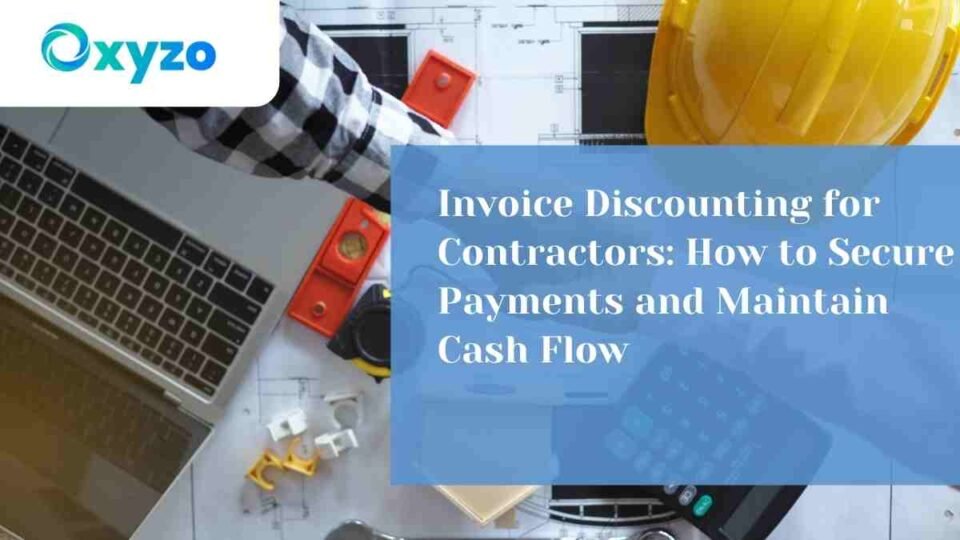Contractors in the construction industry often face payment delays due to unpredictable project timelines and disputes over payment. These delays can put a strain on cash flow and create financial difficulties. Invoice discounting can be a useful tool for contractors to secure payments and maintain a healthy cash flow.
What is Invoice Discounting?
Invoice discounting is a financing option that allows contractors to sell their outstanding invoices to a lender for a percentage of the invoice amount upfront. The lender collects the full payment from the contractor’s client when it is due and returns the remaining percentage of the invoice amount to the contractor, minus a fee for the service.
How Does Invoice Discounting Work for Contractors?
To use invoice discounting, a contractor needs to find a lender who offers the service. The lender assesses the contractor’s creditworthiness and the creditworthiness of their clients before agreeing to purchase their invoices. Once the lender has agreed to purchase the invoices, the contractor submits their outstanding invoices to the lender. The lender pays the contractor a percentage of the invoice amount upfront and then collects the full payment from the client when it is due. Once the lender has collected the full payment, they return the remaining percentage of the invoice amount to the contractor, minus a fee for the service.
Benefits of Invoice Discounting for Contractors
- Improved Cash Flow: Invoice discounting provides contractors with quick access to cash, which can help maintain a healthy cash flow.
- Reduced Risk: Invoice discounting reduces the risk of non-payment or delayed payment from clients. The lender takes on the risk of collecting the payment, leaving the contractor free to focus on their work.
- Flexibility: Invoice discounting is a flexible financing option that can be used as needed. Contractors can choose which invoices to sell and how often to use the service.
Tips for Successful Invoice Discounting
- Find a Lender with Experience in the Construction Industry: Look for a lender who has experience working with contractors in the construction industry and who has a good reputation for customer service.
- Understand the Fees: Make sure you understand the fees associated with invoice discounting. The fee will vary depending on the lender, but it is typically less than 2% of the invoice amount.
- Communicate with Your Clients: Let your clients know that you are using invoice discounting and explain how it works. This can help avoid any confusion or misunderstandings about why payments are being made to a third party.
- Keep Accurate Records: Keep track of all invoices submitted to the lender and the payments received. This will help you stay on top of your cash flow and ensure that you are being paid in a timely manner.
- Plan for the Future: Invoice discounting can be a great tool for managing cash flow, but it’s not a long-term solution. Make sure you have a plan in place for managing your cash flow over the long term.
Conclusion
Invoice discounting can be a powerful tool for contractors in the construction industry to secure payments and maintain a healthy cash flow. By selling their outstanding invoices to a lender, contractors can get paid sooner and reduce the risk of non-payment or delayed payment from clients. It’s important to find a reputable lender, understand the fees, communicate with clients, keep accurate records, and plan for the future when
utilizing invoice discounting. With these tips, contractors can successfully use invoice discounting to manage their cash flow and focus on their work without worrying about payment delays.
In addition to these benefits, invoice discounting can also help contractors improve their credit score. By consistently selling their outstanding invoices to a lender and receiving payment on time, contractors can demonstrate to lenders and credit agencies that they have a reliable source of income. This can lead to better financing options and lower interest rates in the future.
However, it’s important to note that invoice discounting is not a solution for all financial problems. Contractors should still have a budget and financial plan in place to ensure that they can meet their expenses and maintain a healthy cash flow in the long term. Additionally, contractors should carefully review the terms and conditions of any lender before signing a contract to ensure that they are getting a fair deal.
In conclusion, invoice discounting can be a valuable tool for contractors in the construction industry to secure payments and maintain cash flow. By finding a reputable lender, understanding the fees, communicating with clients, keeping accurate records, and planning for the future, contractors can successfully utilize invoice discounting to manage their finances and focus on their work. While it’s not a solution for all financial problems, invoice discounting can be a useful addition to a contractor’s financial toolkit.


